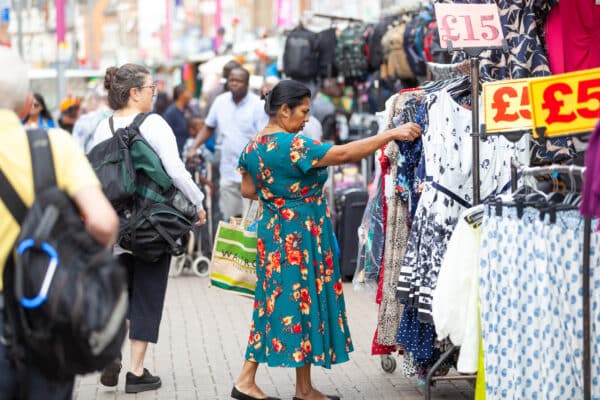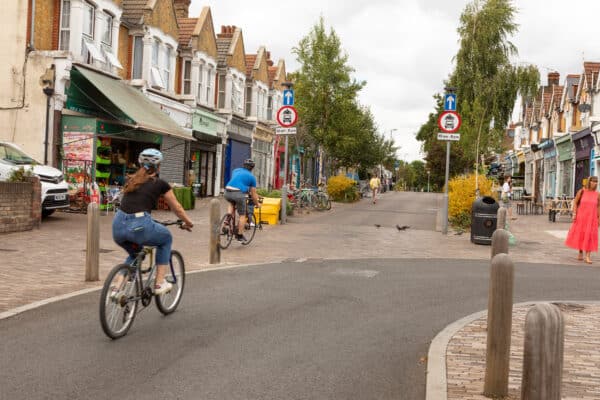In early 2023, the surprisingly simple ’15-minute city’ urban planning concept came under attack. The Member of Parliament for Don Valley in Yorkshire, Nick Fletcher, asked the leader of the House of Commons to “set aside time for a debate on the international socialist concept of so-called 15-minute and 20-minute neighbourhoods”.
Fletcher’s voice joined a simmering rumble of theory – on the more outlandish end of the spectrum – about this planning principle, entertained on GB News and provoking protests over traffic bollards in Oxford.
In a leap from theory to reality, how is the 15-minute city actually being lived around the world?
Planning pioneers in Paris
Blazing a trail through its iconic status, Paris mayor Anne Hidalgo has championed 15-minute thinking in her re-imagining of the French capital. The C40 group of cities collaborating on climate change action cites two Parisian projects that have helped create more complete neighbourhoods and move away from car-orientated planning and over-specialisation of areas.
Agency La Semaest has been working hard to buy abandoned shops and rent them at below-market rates to improve shopping and service access in neglected areas.
The Oasis Project has turned school play areas into public gardens for all residents to access outside of school hours. That project has also created school streets where motorised traffic is restricted at key times of day to make the roads outside a school safer and happier for cyclists and walkers. By 2022, 168 school-streets had been designated, with these ideas also taken up by other cities.
Listening in London
In the London borough of Walthamstow, Cllr Grace Williams, Leader of Waltham Forest Council, told us the council had “learnt many important lessons” from implementing 15-minute city ideas.
“We know that you can’t simply put a point on a map and draw a circle around it. You have to shape the neighbourhood around local people and our diverse communities, rather than the other way around.”

Walthamstow has made its 15-minute neighbourhoods about the social aspects of place and experiences, creating opportunities and activities that people want to enjoy – formed through collaboration with enthusiastic residents, who have shared ideas and ambitions.

Early examples of changes residents have enjoyed include the redevelopment of Fellowship Square to create a better public space for leisure, entertainment and learning that’s bringing the community together and nurturing a sense of belonging, the authority says. Walthamstow is looking to its 15-minute neighbourhoods to help it achieve a net zero carbon emissions target by 2030, policies that include child friendly districts, and a new cultural quarter.
Take 30 in Bogotá
The Colombian capital is aiming to transform 30 districts into ‘vital neighbourhoods’, creating green corridors and prioritising pedestrians and bicycles. The city’s Land Use Plan integrates a 30-minute access strategy into these vital neighbourhoods.
The C40 cities group says two projects in Bogotá are examples of high-quality complete neighbourhood approaches: the 76km of temporary bike lanes created as a response to the Covid-19 pandemic being made permanent; and a new approach to engaging city residents in plans to redesign the Avenida Séptima, which traverses the city. The Streetmix platform is being used to allow residents to easily imagine changes to the major Avenida Séptima routeway, with tools to create and edit street designs from a digital menu.
21 green axis, 21 green squares
Barcelona’s superblock programme started life as the selective closure of streets to traffic around the city, giving priority to pedestrians and cyclists. The C40 cities group says the first example of this tactical urbanism was in Poblenou, where mobile tree planters, street furniture and ground signs created a 58% drop in traffic in the nine block area.
Now superblock is taking over the entire L’Eixample neighbourhood in the heart of the city. Every one in three streets will be ‘pacified’, and when these streets meet they’ll form a 2000m2 square, or ‘superisland’.
The Superilles of Barcelona.
+
Image credits
Nicolas Scordia La Semaest retail
Waltham Forest Council Walthamstow Market & Francis Road
Bedrock Real Estate /Adjaye Associates Cleeveland Cuyahoga Riverfront 18-hour 15-minutes
Victoria State Government Sunshine West Glengala Road
We Are Possible Tempest Road, Leeds as it is and car free vision
Random Institute via Unsplash Avenida Séptima, Bogotá
+
Read our full foray into the idea – and growing reality – of 15-minute cities in our first ever printed issue of Strike magazine, out now.
Follow Sravya Raju, writer of the full 15-minute city feature, on another journey – this time into foraging, in Strike #6